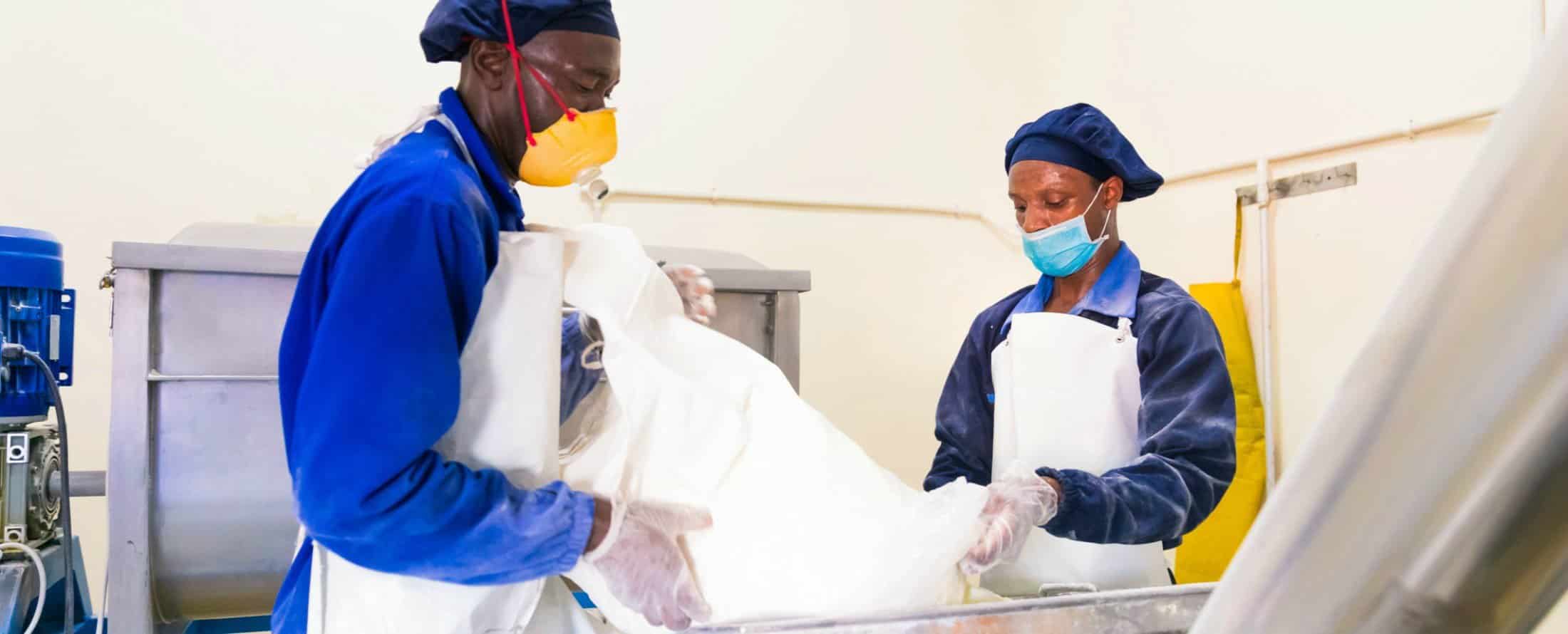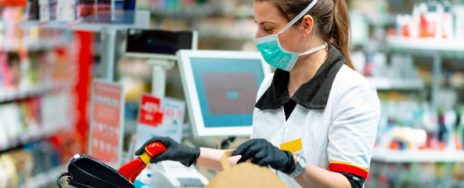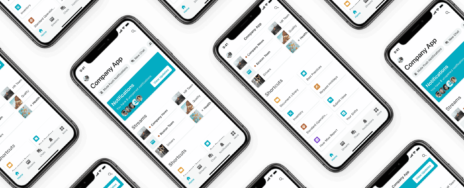Every single industry has felt the enormous impact of this global pandemic. While many companies have been able to swiftly pivot to remote work, the food manufacturing industry has continued to rely on their frontline workforce on-site. Keeping their facilities operations is critical to avoiding disruptions to the food supply chain.
Prioritizing the health and safety of employees while still meeting production quotas and delivery deadlines has proven to be a delicate balance. Processing plants have been the sites of big outbreaks due to the close proximity of the workers in the production lines.
The Food Manufacturing Workforce
There are 3.4 million people employed in food manufacturing across the United States. They are the backbone of an industry that harvests, prepares, and delivers food throughout the country, and even the world.
Food manufacturing companies, particularly meat processing plants, have become coronavirus hot spots as workers in close quarters become infected. One study showed that 1,200 workers at 60 food plants contracted coronavirus. At one Tennessee farm, all 200 employees became sick.
This has reduced workforce numbers in an industry that was already facing a labor shortage and has even forced some companies to temporarily shut down, disrupting the agricultural supply chain.
Having a mobile-first digital communication infrastructure in place has helped companies support and protect their workforce throughout this pandemic by:
- Creating a channel for up-to-date, real-time communication and making an employer a trusted source of essential information to provide employees with the latest news
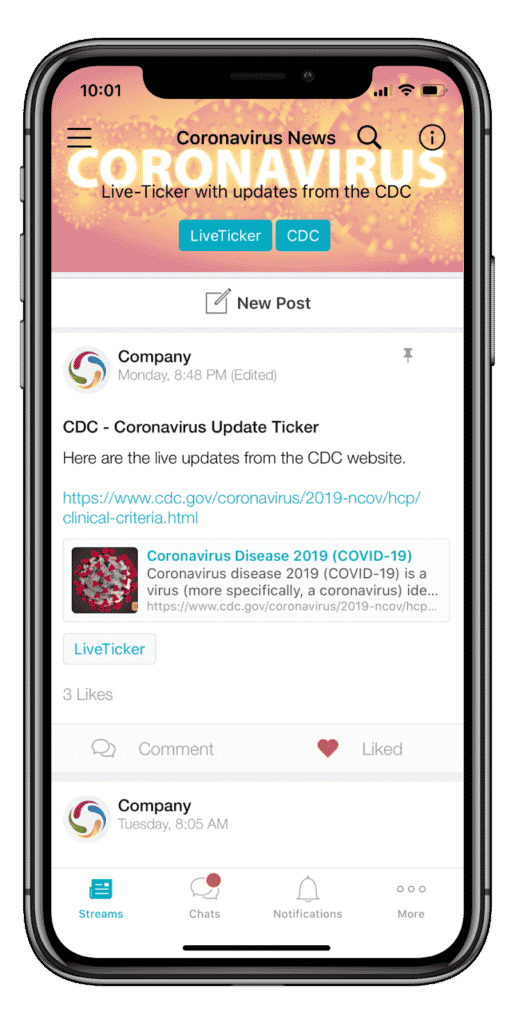
- Having the ability to pivot from everyday operational communication to crisis communication
- Facilitating two-way communication so employees can ask questions or voice concerns in seeking reassurance from their employer
In our recent food manufacturing webinar, Jenna Eastman, Beekeeper’s Head of Customer Success for North America, recently met with four food manufacturing industry executives to discuss their digital transformation and how it has helped their companies support their workforces during this crisis.
Meet our panel of food manufacturing experts:
- Anne K. Hanson, Sr. HR Business Partner, BIX Produce
- Anne Smith – APR, Director of Communications, Lakeside Foods
- Amy Delis, Vice President of HR, BIX Produce
- Dennis Brewster, Learning and Development Manager, HyLife Ltd.

Here are a few of the topics covered in this in-depth webinar on how food manufacturing companies can leverage a mobile communication app to support their workers during this crisis and beyond.
Pivoting from In-Person to Online Communication
The biggest shift for companies at the onset of this pandemic was the immediate pivot from in-person meetings to online communication. Companies who had already delegated internal communications to a team app found themselves in the perfect position for this rapid transition.
Lakeside Foods, the industry-leading producer of frozen and canned vegetables, fortunately launched Beekeeper in January, a mere two months before the COVID-19 outbreak. They wanted to streamline communication and increase the amount of visibility they were getting from traditional communication methods like bulletin boards, emails, and verbal communication.
According to Anne Smith, APR, the Director of Communications, with high mobile adoption rates, Lakeside Foods was able to easily move normal in-person meetings over to their workplace app.
“Safety is critical at Lakeside. Monthly safety meetings used to happen in person, but now we are developing more materials and utilizing our managers to share that information on Beekeeper. Our commitment to safety does not change with what’s going on—the need to be fast, having less people, get things done—there are no shortcuts.”
-Anne Smith – APR, Director of Communications at Lakeside Foods
Other food manufacturing companies have also incorporated video-based training in place of face-to-face communication.
- Manitoba-based pork producer, HyLife Ltd., has produced in-house webinars in place of in-person training to ensure employees continue professional growth. According to Dennis Brewster, they are “really leaning on Beekeeper” when it comes to workforce training.
- According to Amy Delis, Vice President of HR at Bix Produce, they are using Beekeeper’s video sharing capabilities to show employees proper protocols for entering the building, mask usage, sanitizer application, and temperature screenings for the health and safety of their workers.
- At Lakeside Foods, Anne has produced and shared inspirational videos from their CEO on Beekeeper simply using her iphone and imovie.
Constant Communication to Track Evolving Protocols
As scientists and the CDC uncover more information about the novel coronavirus and how it is transmitted, they have put out an ever-changing list of mandates for how people should conduct themselves around others.
Many essential workers have had to rely on their employers to relay the latest information on best practice workplace protocols. With trust in employers at an all-time high, according to the 2019 Edelman Barometer Report, food manufacturing workers have an advantage when they possess a mobile workplace app to receive real time messaging.
Dennis Brewster, the Learning and Development Manager at HyLife Ltd., Canada’s leading pork producer said “steady, consistent messaging” has been critical during this crisis. Dennis led HyLife’s transition to Beekeeper’s mobile platform and has found it helpful in reaching every worker, half of whom are still working on site and half who are now working remotely.
“Securing the food chain and producing a quality product while keeping people safe is the primary goal through the COVID-19 crisis. Beekeeper has become our primary driver of all communication, especially health and safety. We have been able to give a consistent and calm message to our entire workforce, whether they are on or off site.”
-Dennis Brewster, Learning and Development Manager, HyLife Ltd.
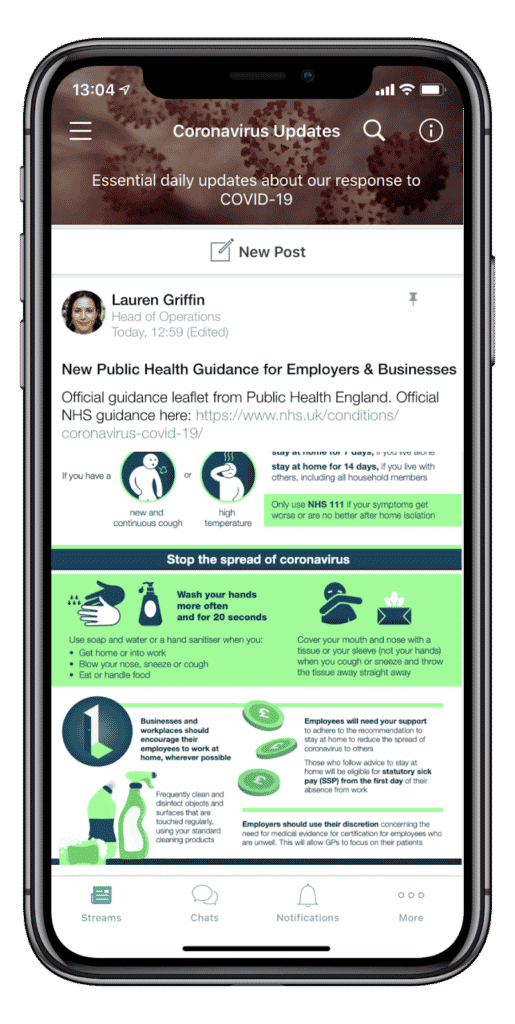
Including Every Employee In Communication
Designed to support bottom-up leadership, a digital workplace has features that enable employees to have a voice in company dialogue. Not only does this help during a time of crisis, but it is a powerful strategy for creating an inclusive culture that could help attract more talent to the industry and address the ongoing labor shortage. Some of these features include:
In-Line Translation
With a diverse workforce, food manufacturing leaders have struggled to communicate with every worker on their team. With inline translation, Beekeeper enables every worker to send and receive information in their preferred language, a critical capability right now, especially at a company like Bix Produce where they have 10 different languages spoken throughout their workforce.
“Inline translation has been a great tool to communicate with every employee. Our CEO is bilingual so he loves being able to share updates with all team members and know they will be able to receive them in their spoken language.”
-Anne Hanson, Sr. HR Business Partner, Bix Produce
Chats
Employees have the ability to use the chat function to connect directly with their peers and managers. At Bix Produce, employees have been using chats to connect with HR and inquire about their personal information during this crisis.
Surveys
Surveys have enabled employers to keep their finger on the pulse of their workforces’ emotional wellbeing. For HyLife, the survey feature “has been the biggest win for us during this whole pandemic.” They do frequent check-ins, asking employees, ”are we supporting you the way you need to be supported?”
While every company is facing its own challenges right now, a digital solution can help reduce operational disruptions and support their commitment to the health and wellbeing of their workforce.

